The Complete Guide to Preparing for Weaning

How to improve fertility and financial returns at weaning
Weaning is a pivotal time in a calf’s life and can be stressful if done incorrectly – having a significant impact on productivity in later life. So how can farmers get it right? We speak to Rebecca Small, animal health and welfare scientist at AHDB and Colin Mason, Veterinary Investigation Officer at SRUC to find out.
To help you navigate this blog, we’ve created some useful links that will take you directly to the section that you want to read:
Monitoring Body Condition Score
Calf feed conversion efficiency
Vaccinations and health planning
Respiratory virus vaccination programme
Weaning objective: Optimum weaning weights
Improving efficiency means maximising calf weaning weights while also getting cows back in calf. In a 100-cow herd, increasing average weaning weights by 10kg will increase output by nearly £2,000/annum.
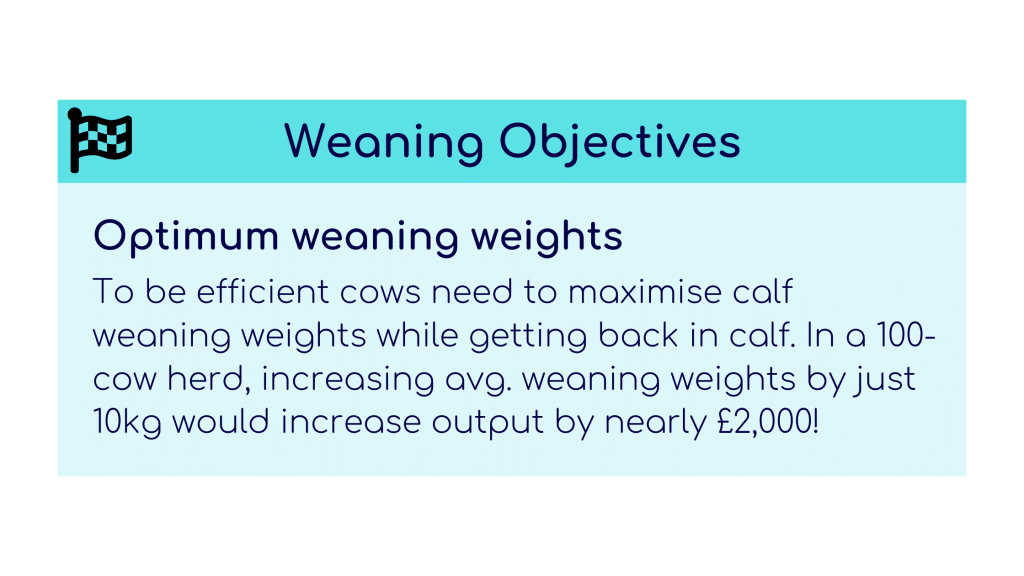
Weaning KPIs:
These are measurable goals that relate to calving objectives.
- 1.1kg daily live weight gain from birth to weaning
- Of all cows/heifers served, >94% of calves are weaned
- Calf to reach 50% of dam weight by weaning
While you might have a rough idea where your herd falls on these metrics, continuously tracking them will help you understand where improvements can be made, and how quickly you’re making progress.
If it all sounds complicated don’t worry. Logging weights in the Breedr mobile app will automatically calculate these metrics for you.
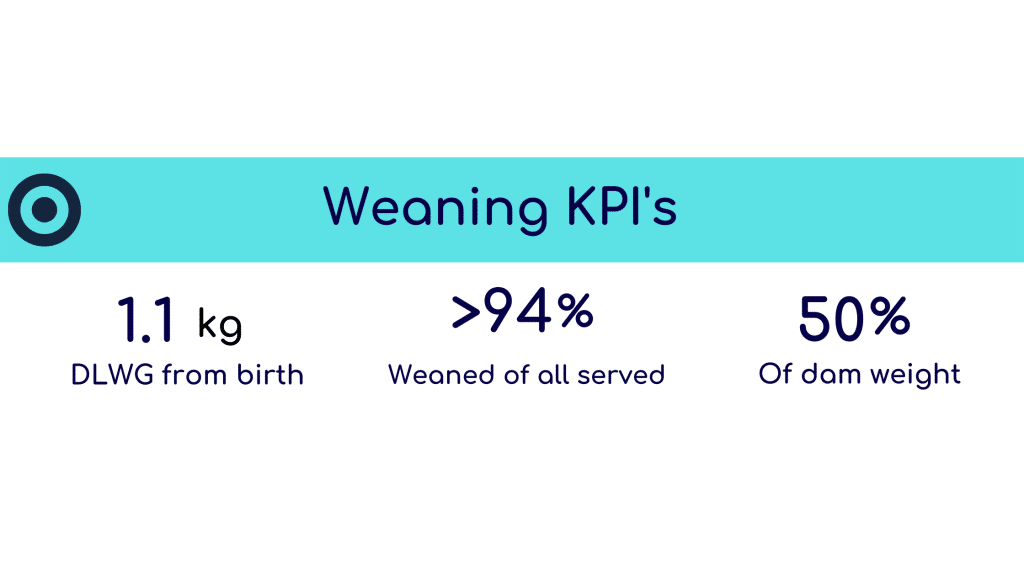
Six to 10 weeks before weaning:
When is it best to wean?
At 200 days or six-and-a-half months, calves are getting 75% of their nutritional needs from somewhere other than milk, explains Ms Small. “The timing to wean can be led by feed supply and cow condition; If body condition score is starting to drop then farmers might consider weaning a bit earlier. Alternatively, if the cow is looking overfat, then keeping the calves on a little bit longer can help pull that back.”
Monitoring cow body condition score (BCS)
While the cow is feeding her calf, she needs energy and protein to support lactation, on top of her normal requirements for maintenance. If these requirements are not met, her milk supply will fall and she will begin to mobilise body reserves to support nutrient demand.
For a cow to achieve a 365-day calving period, taking an average gestation period of 281 days, she needs to conceive roughly 84 days (nearly three months) after calving. Calves regularly stay with their mothers for up to eight months; during this time the cow will hopefully become pregnant.
Although the nutrient requirements for pregnancy in the first trimester are small, it is still a biological process the cow has to support. If she still has a calf to look after, as well as herself (maintenance) this soon becomes a huge demand on her body. If not managed correctly, this could result in her losing too much body condition and impact development of the recently conceived foetus.
Managing cow BCS during mid to late lactation is crucial for a successful calving and cows should be in BCS 2.5-3 when they calve. Avoid extreme body condition changes close to calving – getting it right earlier is important.
Timing of weaning is one strategy to manage BCS. Cows over BCS 3 can afford to hold onto their calf but cows under BCS 2.5 should be freed from the rearing burden.
Calf feed conversion efficiency
Younger animals convert food into weight more efficiently than older ones. A young calf may consume 4kg of food and grow by 1kg/ day, but at 12-months-old this animal may need double the amount of food to achieve the same DLWG.
It is more efficient to wean a calf earlier and feed it better quality feed because it will be converting more feed into weight gain. A calf that remains on a cow that’s failing to produce sufficient quality or quantity of milk will not be maximising its food conversion efficiency. Feeding concentrates is more cost effective, or offering better quality grazing could also be an option for spring calving herds or conserved forages for autumn calving herds.
Weaning should not be dictated by the calendar but by the cow and calf. Each season will vary in terms of grass and/or silage quality and ensuring both animals are adequately supported nutritionally should dictate when to wean.
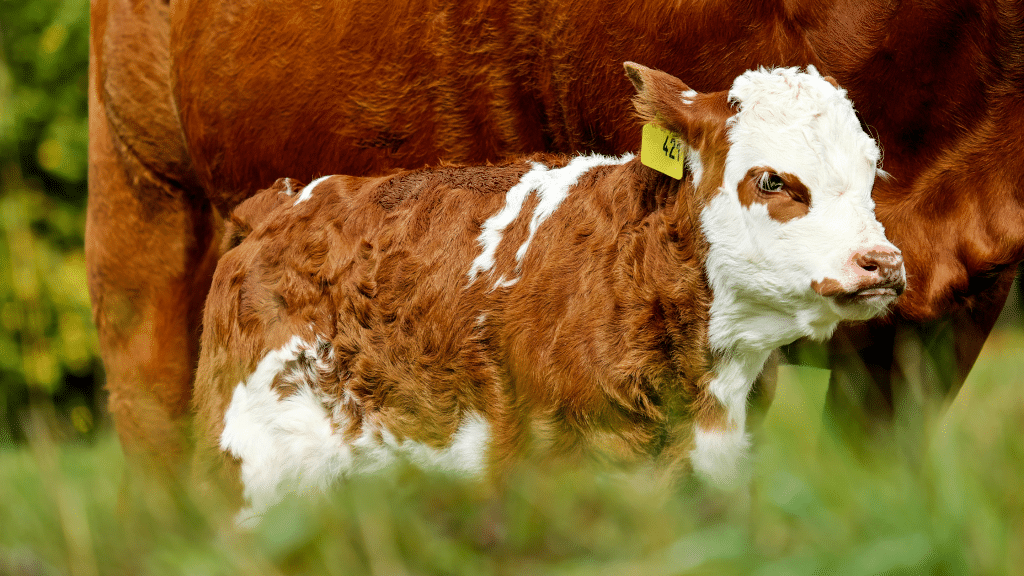
Managing stress at weaning
Weaning can be a stressful time for a number of reasons; firstly a change of environment – whether that’s weaning when housing (in spring calving herds) or weaning at turnout (autumn calving herds). There is also a change in diet, with the removal of milk and introduction of concentrates, and a change in social structure. The cows will no longer dominate the social order and calves will have to establish a pecking order while being separated from their mother.
Managing this stress is important because it can impact on growth rate, with nutrition being one example of where this impact can be managed. “Start creep feeding the calves six to 10 weeks before weaning,” says Ms Small. “This will minimise stress as well as a drop in performance, because they have already started the transition to solid food. It also reduces the risk of pneumonia.”
Creep feed should be between 14% and 16% crude protein and 12.4% metabolisable energy. “Feeding should be ad-lib, but watch out for metabolic diseases like acidosis when starting creep feeding.”
Adding molasses can help with palatability when transitioning too.
Weighing
Weighing is important for monitoring the impact of weaning on calves, so ensure the equipment is compatible with the Breedr app. Bluetooth enabled weigh heads and stick readers make weighing faster, which will help reduce stress at handling
For those who would like to buy weighing equipment, but don’t know where to start, we have a help guide on our website – Get started choosing weigh kit | Breedr Help Center
How is it best to wean?
There is a one-step approach, which involves taking the calf away from the cow to somewhere it can’t see or hear her. “Research has shown this might be a lower welfare method due to the higher stress of sudden removal,” says Ms Small.
There is also a two-step approach. “For example, if they’re in a shed with their mum, there could be a gate which is shut so they can still see their mothers but they’re not drinking milk. They’re eating creep and drinking water but are still around their mothers, for a week or so before being taken away.
“Research has shown the two-step method to be a higher welfare method, however it has been inconclusive in terms of onward performance. It can also be done outside, using a fence.”
A big consideration when weaning is the facilities on farm and what is simplest for those involved.
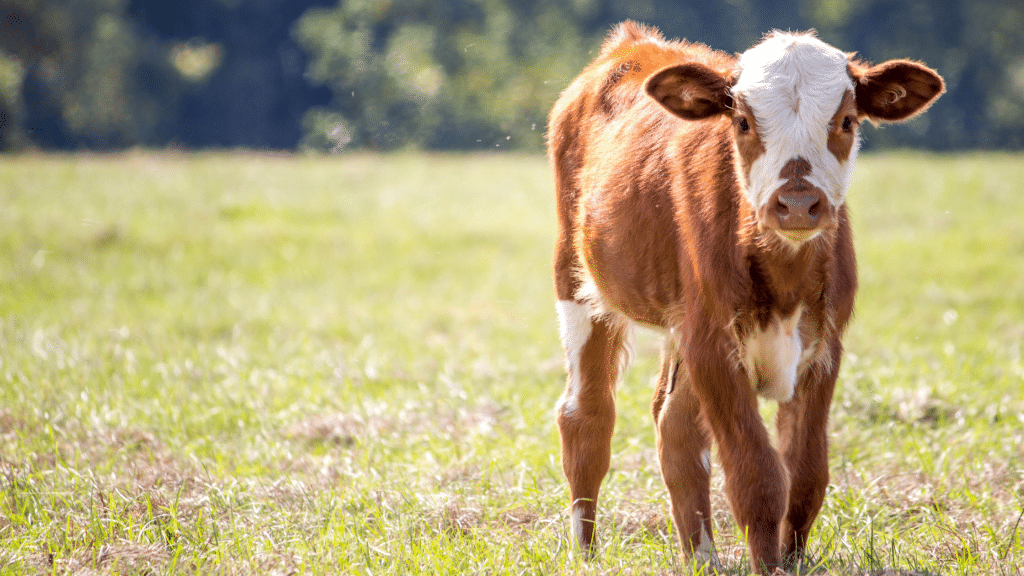
Vaccinations and health planning
“The best time to start any health plan is well in advance of weaning”, says Colin Mason, Veterinary Investigation Officer at SRUC. “Vaccinations should be in place a week to 10 days before weaning, to ensure immunity by weaning. It’s best practice and the closer farmers can get to best practice, the better,” explains Mr Mason.
Respiratory virus vaccination programme
Consider what – if any- respiratory virus vaccination programme the calves are going to move onto. “For me, vaccination is essential. It adds value to the calf if it’s sold as a store and any vaccine is going to work far better if it’s given before the animal is weaned and stressed,” says Mr Mason.
Pneumonia – despite some farm-to-farm variation – is pretty predictable. “The calves are going to be exposed to most respiratory pathogens because they are common. And the risk goes up if they are being moved, mixed with other groups, marketed or sold onto another purchaser for rearing.
So, getting vaccines into the calves before they are weaned is really important, he adds.
Parasite control
When considering parasite control, lungworm is a common issue. “Think about the level of risk, what the worming programme is and whether there is any evidence of coughing in the run up to weaning, which is common in low grade lungworm.
“Although lungworm is not going to kill the calves it will have an effect on the lungs and might make the risk of viral or bacterial pneumonia higher, particularly in the late summer and autumn.”
Although it might be tempting to blanket worm cattle, consider the sustainable use of anthelmintics, says Mr Mason. “Worming needs to be more targeted – this is where looking at the worm burden and worming programme is useful.”
Clostridial disease
Clostridial diseases like blackleg or Black’s disease aren’t uncommon. “They are more common in the West than the East, but consider the risk.
“Vaccines are cheap and clostridial disease presents as a dead animal – you don’t need to save very many to make the vaccine worthwhile.”
BVD
For those aiming for BVD-free status, compulsory in some parts of the country, consider the timing for BVD check tests. “The optimum time to do it is at nine to 12 months of age, which might be after weaning – and testing a month after housing is the best time,” says Mr Mason.
“If you’re vaccinating as part of an autumn vaccination programme, ensure that it’s not interfering with check tests for BVD, depending on what vaccines are used.”
Post-weaning environment
A hygienic environment for calves after weaning is important. “Ensure clean bedding, correctly ventilated sheds and that creep feeding continues if they’re going out to grass,” says Ms Small.
“The transition between diets can be quite impactful on productivity.”
How Breedr can help:
- Add all medicines/vaccines to the virtual cabinet on the mobile app by scanning the bottle’s QR code
- Record any administrations on-farm using the mobile app, these will populate reports on the web app which will help:
- Monitor usage of certain medicines to identify trends in disease pressures
- Compliance with any regulatory audits with your own medicine book and medicine record reports
- Recorded medicine administrations will show in the animal’s history timeline when selling them via the Breedr Trading platform. This enables you to market higher value animals as the platform allows you to prove their health status.
Breedr weaning tasks:
- Weigh cows and calves using the app – Crush mode explained | Breedr Help Center
- Log cows’ BCS
- Organise cows and calves into separate groups and set weight targets. The predictive growth algorithm will allow you to track whether animals are on target or over/under achieving
- Log weaning activity against each calf – Logging a weaning activity | Breedr Help Center
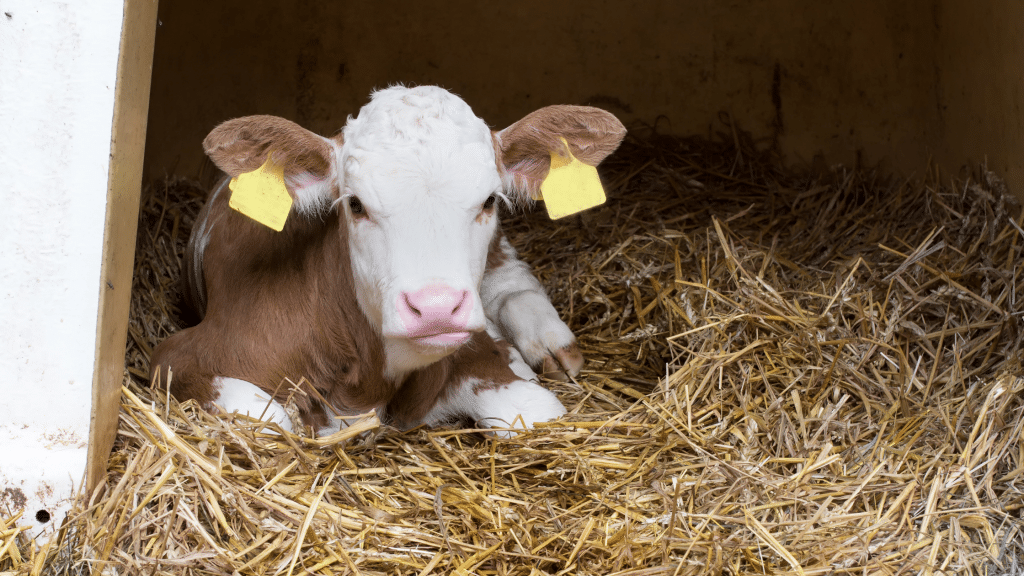
Post weaning analysis
Cow performance
Potentially the most important KPI for understanding herd productivity is the number of calves weaned as a percentage of cows/heifers served. A suckler cow’s weaned calf is deemed as a measure of her output and knowing how well cows are at conceiving, calving and rearing is important.
To calculate this metric simply log in the Breedr app when the bulls went in with the cows or when you started serving them to AI. Then at weaning, log a weaning activity against the calves.
Use the Breeding KPI report to understand your breeding cows’ ability to conceive and calve, but also to understand their ability to rear a strong healthy calf. As a minimum, ensure a birth weight is logged when recording the birth. Then weigh the calf at weaning – any other weights added in between will add to your depth of understanding.
From this, the app will calculate the calf’s DLWG from birth to weaning and give an indication of the cow’s rearing ability. This can also help gauge whether you are weaning too late, as DLWG may be hindered by keeping the calf on a low yielding cow.
When delving into suckler cow efficiency, ensure cows are weighed at weaning, as well as calves. The target is for a weaned calf to weigh 50% of the cows’ weight.
Big cows do not always equal big calves and will incur greater maintenance costs. Although a smaller cow may not wean a heavier calf, her input costs will be much lower so her margin on output will be greater.
Weighing the cow and calf at weaning will allow you to understand how efficient a cow is and indicate how her mature weight is impacting your business’ productivity.
Calf performance
To understand how the weaning strategy impacts calf growth, simply weigh calves at weaning and at semi-regular intervals thereafter; Breeder recommends every 4-6 weeks.
Post-weaning nutrition is important to ensure calves continue to grow but also to make sure your business is still benefiting from the animal’s ability to convert food into weight with relatively good efficiency.
At this age, animals will require protein, which breaks down into amino acids to provide the building blocks for muscle development. It is also important to avoid the calves from gaining too much fat. This impacts muscle development and will result in small carcasses with potentially poorer conformation, which can attract penalties when slaughtered.
It is also important to tailor the diet to the animal’s sex and breed. Heifers and native breeds are more susceptible to gaining fat and should be fed differently to continental bulls which require more protein to support their growth potential.
A growing diet should provide adequate protein levels at around 16% crude protein (CP) and discourage deposition of fat by limiting the starch content to no more than 20%.
If you have captured appropriate data in the Breedr app and want to sell weaned calves into the store market you can sell them via the Breedr Trading platform to like-minded farmers who value such important information.
Alternatively, get in touch with the Breedr business development team who can help source the most appropriate buyers.
Those selling stores in one go and who have recorded regular weight data in Breedr might qualify for its new cashflow service. Get in touch with the team to find out how this can support your business’ finances.
Breedr weaning tasks:
- Track progress using the web-based Breedr KPI report – Breeding KPI Report | Breedr Help Center
- Sell stores and culls using the app and/or ask Breedr about cashflow solutions – How to log a live animal sale activity | Breedr Help Center
Case study: James Wright
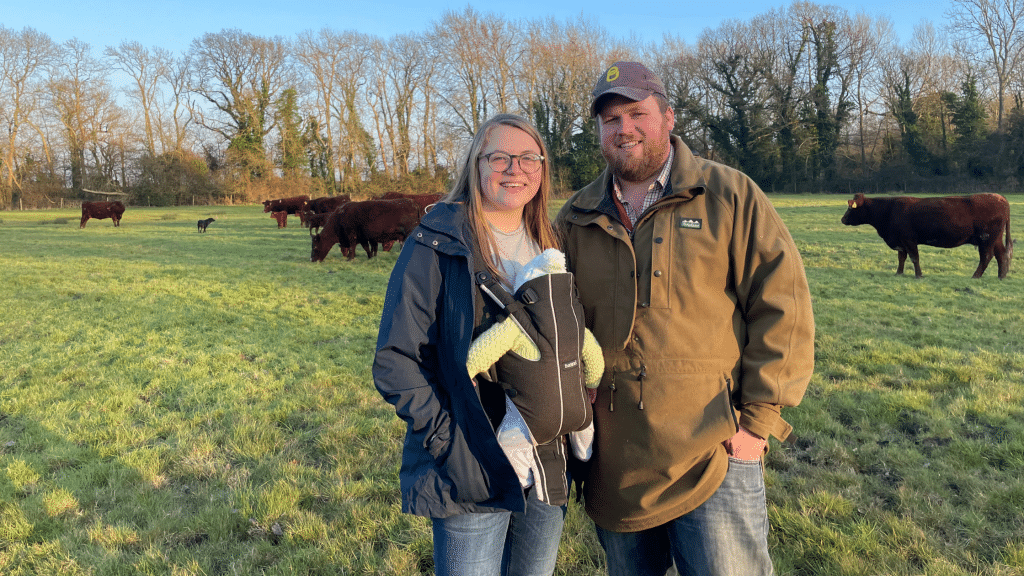
Beef farmer James Wright has found out first-hand how important it is to get weaning right with his herd of 30 Red Devon suckler cows. “Looking at the Breedr Benchmark report for the last three years, I found that our calves have a three-to-four-week flatline where they don’t grow at all,” explains Mr Wright, who is also product manager at Breedr.
“I thought this was pretty common and calf growth just slows down with the change of diet. However, when comparing my farm to the others in Breedr, I saw we were not the norm but the exception,” he says.
“Most calves only slow in growth for a week. Three or four weeks is not normal and it adds up to a lot of costs. It’s about £2,500 in lost growth in that month.”
Mr Wright weans and houses his calves at the same time, which he believes is the source of the problem. “We wean quite late as we try to leave the calves on milk as long as possible – so for ease we wean and house at the same time. Next year we will be weaning and housing separately to try and address this issue and keep the calves growing all the way through.”
Read: Complete Guide to Preparing for Service




